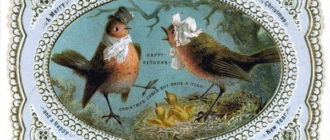
Painting Bathing the Red Horse by Kuzma Petrov-Vodkin is a masterpiece and a formidable prediction
“Bathing the Red Horse” is a painting by Kuzma Sergeevich Petrov-Vodkin, which has become a harbinger of terrible events and changes in the country. The canvas depicts a naked young man (the master’s cousin posed for the masterpiece) riding a large stallion. Contrasts almost hurt the eye – the influence of Matisse (Henri Matisse), whose work was carried away by the author, is clearly traced.
The horse’s fantastic scarlet hue looks even more vivid against the background of the cold blue waters of the lake and the lean yellow body of the rider. Other bathers and two more horses are visible in the background. These figures seem to add dynamics to the picture. It is noticeable that the rider can barely hold the animal.
However, this tension of muscles and will is strangely contrasted by his calm, almost languid face and his gaze, directed either into the distance or deep into himself. The image of the stallion seems too large, almost intimidating. To achieve this effect, Petrov-Vodkin used a special technique of spherical perspective. The animal looks sideways at the rider, it seems that in a second it will tear the taut reins out of his hands and, pushing the viewer with a powerful croup, will rush away.
Author: Kuzma Petrov-Vodkin (1878-1939).
Year of writing: 1912
Size: 160 x 186 cm.
Style: Abstractionism.
Genre: Household painting.
Technique: Oil painting.
Material: Canvas.
Location: State Tretyakov Gallery, Moscow.
Kuzma Petrov-Vodkin was born in the Saratov province, the city of Khvalynsk.
His parents were ordinary people: his father sewed and repaired shoes, and his mother served in a rich house. The boy received his first drawing lessons while observing the work of local icon painters. The religious genre of painting later became his profession for many years and remained a vocation for life.
The influence of icon painting is clearly seen in Bathing the Red Horse. At one glance at the figure of a horse, one recalls the numerous St. George the Victorious, red stallions who lifted Elijah the prophet and the scarlet winged horse of the Archangel Michael to heaven. However, according to the master’s intention, nothing religious and, even more so, revolutionary in the canvas should have been.
The picture was conceived and written as absolutely everyday.
The artist simply created a genre scene of village boys bathing horses. Appeared in 1912 at the exhibition “World of Art”, which took place on Myasnitskaya Street, the picture made a splash and was sharply criticized by some famous painters. Repin, Benoit called her ridiculous, almost vulgar. Ilya Efimovich even burst out with a devastating newspaper article.
However, this did not prevent the canvas almost instantly from being awarded the title of a masterpiece, a symbol of the coming purification and renewal of Russia. And so it happened. Two years later, the canvas went to an exhibition in Sweden, where he survived all the bloody events of the first half of the century.
Only in 1950, after long, painful negotiations, the canvas returned to the master’s homeland. The painting “Bathing a Red Horse” by Kuzma Petrov-Vodkin not only brought fame to its author, but also became a symbol of the whole “rattling” XX century. Since 1961, the canvas has adorned the Tretyakov Gallery and is a pearl of the museum collection.






